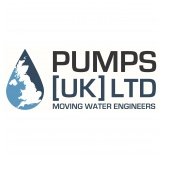High Lift Pump Replacement Project Offers energy saving solution

For half a century, residents and commerce across eight municipalities of the greater London Area of south western Ontario have received their potable water supply from the Lake Huron Water Treatment Plant near Grand Bend. In 2017 the Lake Huron Primary Water Supply System announced an energy audit and pump optimisation study that identified a significant opportunity for energy savings and the optimisation of pump operations for the pumping station. flow found out how the savings were realised, with a solution from KSB.
The outcome of the study commissioned by the Lake Huron Primary Water Supply System (LHPWSS) has been the modification of the original five-pump configuration in the pump station and its replacement with a six-pump configuration. This has involved removing three of the original 50-year-old 3000hp (2237kW) pumps and replacing them with four high-lift pumps from KSB. With the new pumps running on their operational curve, substantial energy savings can be made. As an electrical transmission-connected entity, the LHPWSS was eligible under the Independent Electricity Systems Operator’s (IESO) Industrial Accelerator Program (IAP) for financial incentives for eligible energy efficiency projects.
Four international pump manufacturers submitted bids, but KSB Canada’s submission stood out. Despite being the highest capital expenditure cost by a significant amount, KSB’s submission actually offered the lowest overall anticipated lifecycle cost over 25 years. This was possible due to KSB’s energy efficiency and creative solution offering a single type for all four pumps (large and small). This reduced the spares requirement, in turn reducing the lifecycle cost and providing flexibility to easily increase pump capacity in the future as demand continues to increase. The contract was awarded to KSB Canada, which commenced design and consultation work in 2019.
The LHPWSS plant has a current treatment capacity of 340 million litres per day and serves the city’s population of approximately 420,000 people in the eight municipalities, including 80% of the city of London.
The pumping station was originally designed for a single pipeline, but later, in 1996 and 2014, The Regional Water Supply Division of the City of London (RWS) partially twinned the 47km main transmission pipeline to a terminal reservoir resulting in the pumps no longer running on their curve.
PUMP SELECTION
The overriding issues the pump suppliers faced were delivering energy savings and ensuring that pumps could be accommodated in the limited amount of space in the pump hall and that the floor could withstand the weight of the pumps. In addition, the supplier needed to guarantee a wide operating range with low available NPSH, covering multiple duty conditions with pumps operating at full speed.
KSB’s proposal, using just a single type for all four pumps, meant only the impellers and motors were different, in accordance with the size of the pump. The base plates for each pump were the same size.
A significant benefit of the proposal was that with the smaller pumps using the same size casings and base plates as the two larger pumps, they had engineered the opportunity to increase the pump size by fitting larger impellers and motors at a future date. This can be done on site without any civil works needing to be carried out. Thus, if demand grows for the water supply to be increased, it can be accommodated with the minimum cost and disruption to the plant.
Following a 25-year Life Cycle Cost analysis, taking into account the capital cost, energy consumption and maintenance costs made by AECOM Canada, consultants for LHPWSS, the contract was awarded to KSB.
“The eventual scope of the project involved the supply of four bottom suction horizontal split case pumps, vibration monitoring system and flow straighteners (suction conditioning spools) for potable water distribution (water supply),” explained Marcus Henderson, KSB National Operations Manager. “Also, part of the contract was to supply two TECO make 1494kW/2000hp @ 1200rpm, 4160V / 3Ph/60Hz and two TECO make 2611Kw/3500hp @ 1200rpm, 4160V / 3Ph/60Hz electric motors.” The plant’s pumps are rated for 1,158 l/sec, and each of the pumps’ discharge piping is equipped with a 500mm diameter tilting disk check valve, along with a 500mm diameter metal seated ball valve equipped with a motorised electric actuator. The water treatment plant has two hydropneumatic tanks, each with a capacity of 580m³, for transient protection of the 47km partially twinned 1200mm diameter water main distribution system. The pumps specified were 2 x RDLO 500-835 B SC G O BS with a design flow capacity of 900 l/sec and a design flow pump head of 125m TDH, along with 2 x RDLO 500-835 A SC G O BS with a design flow capacity of 1,300 l/sec and a design flow pump head of 150m TDH.
RDLO PUMPS
Proven in many water applications worldwide, the RDLO pumps were identified as more than capable of meeting the customer’s specific demands. KSB’s RDLO axially split, single-stage volute pumps have been developed specifically for handling raw water, clean water, service water and transport fluids with minimal flow resistance. As a result, they lower the energy and life cycle costs of the systems in which they are installed. They also meet the twin demands of reliability and high availability. Reliability results from the casing halves being sealed by solid casing split flanges at the upper and lower casing part, and high availability is attributable to the use of generously dimensioned bearings and high-quality shaft seals. Smooth running is ensured at all times thanks to the flow optimised, vortex-free intake elbow and rigid shaft with a short bearing span. Because the shaft is completely sealed without steps/ threads in the wetted area, the RDLO offers reliable power transmission.
The combination of solid bearing brackets, a short and rigid shaft and pre-loaded bearings guarantees low vibration and extended operating life for the bearings, seals and coupling. Being axially split case pumps simplifies maintenance procedures, enabling ready access to all parts for thorough inspection. The drive may be positioned on both the left and right of the pump without additional parts or modifications to the casing being necessary.
“Two of the pumps are connected to 3500 hp motors, and the other two to 2500 hp motors. These are the main pumps supplying drinking water to the entire LHPWSS, with many customers over 50km away, so they consume a significant amount of energy. It is marginal improvements such as these that can improve efficiency by one or two per cent, but they work out to big dollars when you consider the plant’s overall size,” added Marcus.
INSTALLATION
“Because the pumps were being retrofitted into the original premises, it was necessary to run the plant at half capacity on one transmission side during installation,” explained Billy. “As there was a spare bay already in the plant it was possible to utilise this for the installation of the first pump. The procedure then involved running pumps one, two and three while pumps five and six were being installed before switching to running pumps four, five and six while pumps one, two and three were installed.”
The introduction of the new pumps also provided the opportunity to retrofit isolation valves. Historically the lack of isolation valves on the existing pumps required the complete isolation of half of the discharge header board (three pumps) to facilitate the repair to one pump, effectively limiting the pump capacity of the plant to half of its rated capacity. The selection of a combined control/ check valve to replace two valves on each pump discharge meant that each pump would have a dedicated isolation valve for each pump discharge. Isolation valves on each pump discharge will enable the complete isolation of the combination valve and the highlift pump for maintenance and repair purposes.
PUMP EFFICIENCY
A significant element of the project was the issue of the pumps delivering energy savings, which involved factory acceptance testing at KSB’s Halle facility in Germany. Marcus explained: “Factory testing involved shipping one motor of each size to our factory and coupling them up to the pumps for string testing and recording the overall pump performance. The motors also underwent type testing under full load in accordance with the IEEE Standard so that they could determine motor efficiency.
“There were strict penalties on performance guarantees on this project, so if we failed to meet the efficiency guarantees given, KSB would be required to pay LHPWSS the difference in energy costs delivered and those which were guaranteed over the performance lifetime. “It is worth noting that when the pump tests were carried out, they had to be on bare internals. The coatings were only applied after testing, so it was a true test of the raw efficiency of the pumps. Given that coating can improve efficiency by one to two per cent, we faced some tough conditions.” 
Back to Latest News

1.png&w=170&h=170)




3.png&w=170&h=170)
2.jpg&w=170&h=170)



